March 13th 2025
We got another late start. We were exhausted. After much deliberation (so many choices!), we decided to go to the National Tile Museum. The museum is set in Madre de Deus Convent, founded in 1509 and its collections allow a journey through the history of tile, from 15th century till present day.
It is located up the coast, northeast of where are staying. The tile museum was fascinating. We had seen so many beautiful tiles on the walls and floors of cathedrals, chapels, palaces, and mansions. Going to this museum gave us a better understanding of the influences on the tile making, and how the techniques and production overlapped and were influenced by other cultures. As it is with most Art History, the sharing of techniques and styles between artists transcends borders. The word Azulejo comes from the Arabic word azzelij or al zeleycha which means “small polished stone” and refers to a ceramic piece, usually squared with one side glazed.
First, the wikipedia definition of Azulejo:
Azulejo is a form of Portuguese and Spanish painted tin-glazed ceramic tilework. Azulejos are found on the interior and exterior of churches, palaces, ordinary houses, schools, and nowadays, restaurants, bars and even railways or subway stations. They are an ornamental art form, but also had a specific functional capacity, like temperature control in homes.
There is also a tradition of their production in former Portuguese and Spanish colonies in North America, South America, the Philippines, Goa, Lusophone Africa, East Timor, and Macau. Azulejos constitute a major aspect of Portuguese architecture and Spanish architecture to this day and are fixtures of buildings across Portugal, Spain and their former territories. Many azulejos chronicle major historical and cultural aspects of both Portuguese and Spanish history.[3]
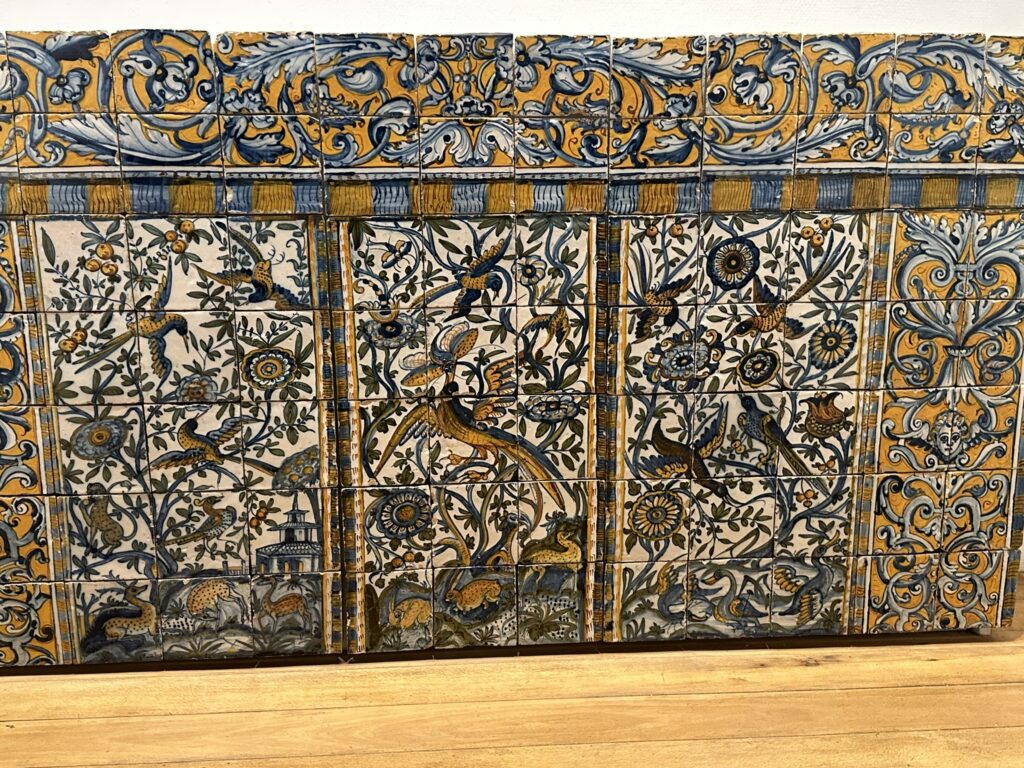

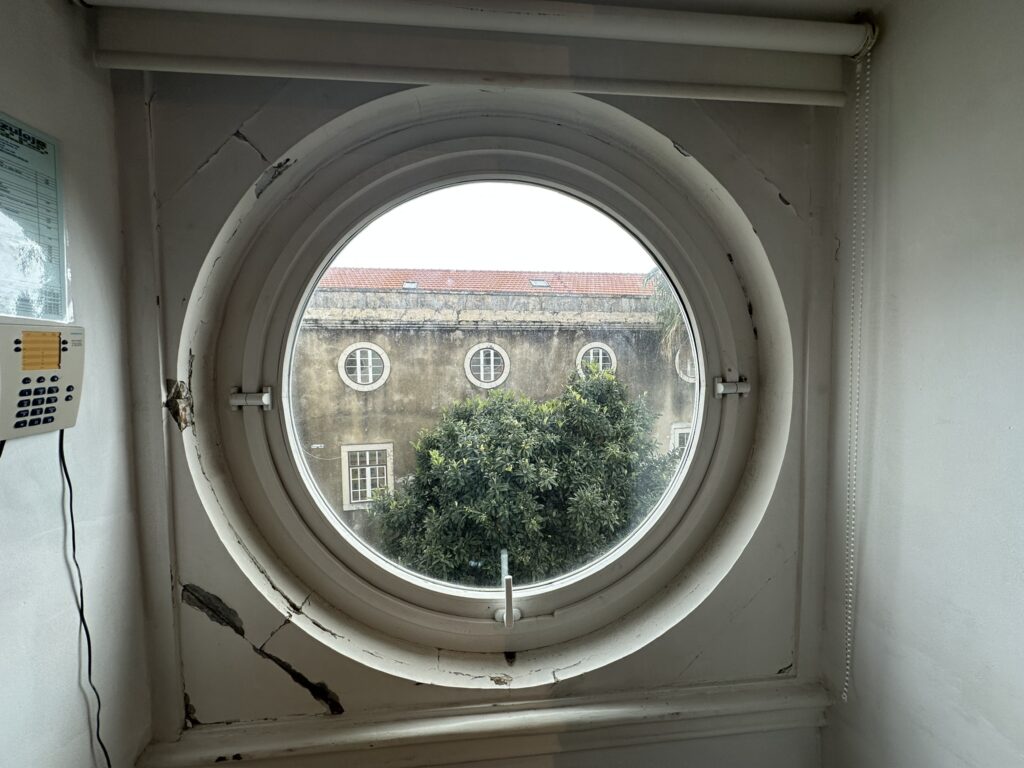
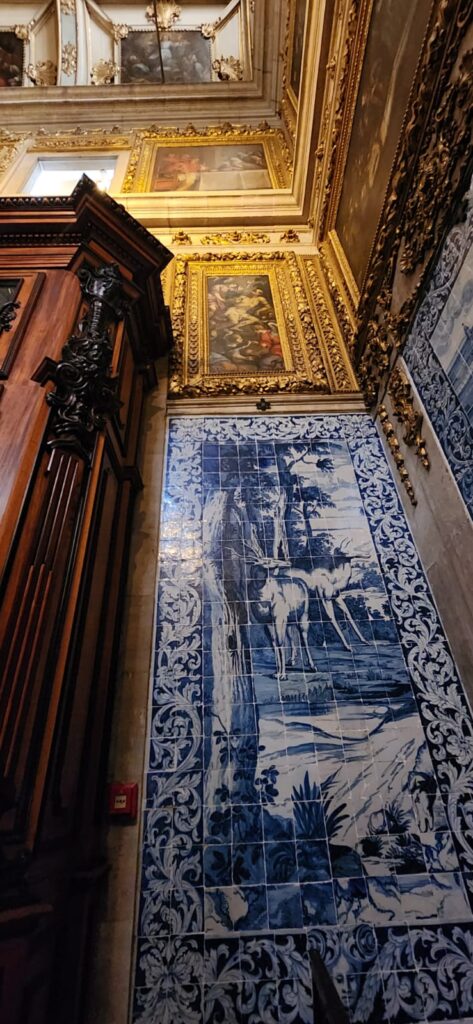
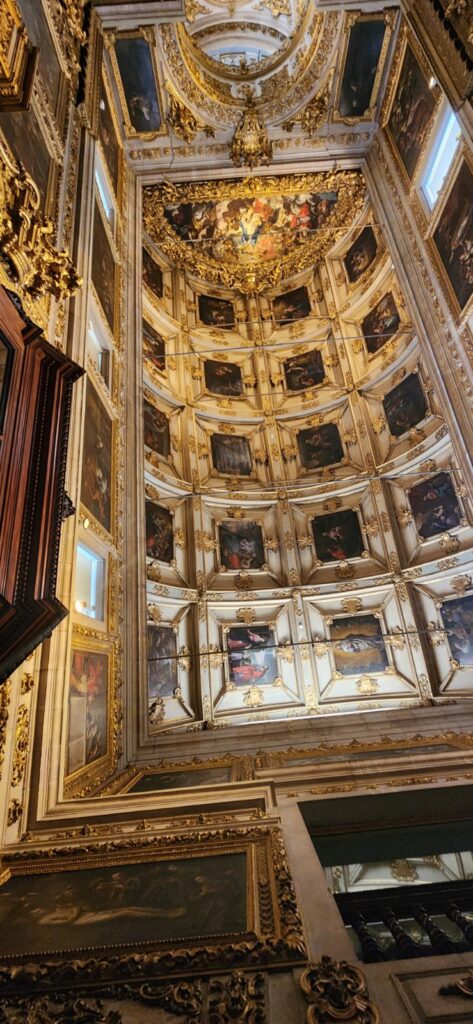
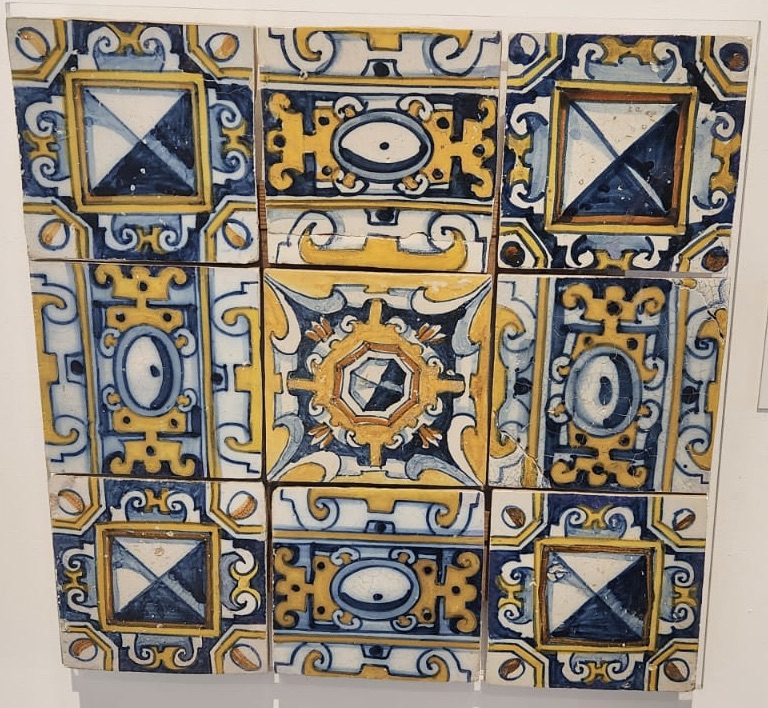
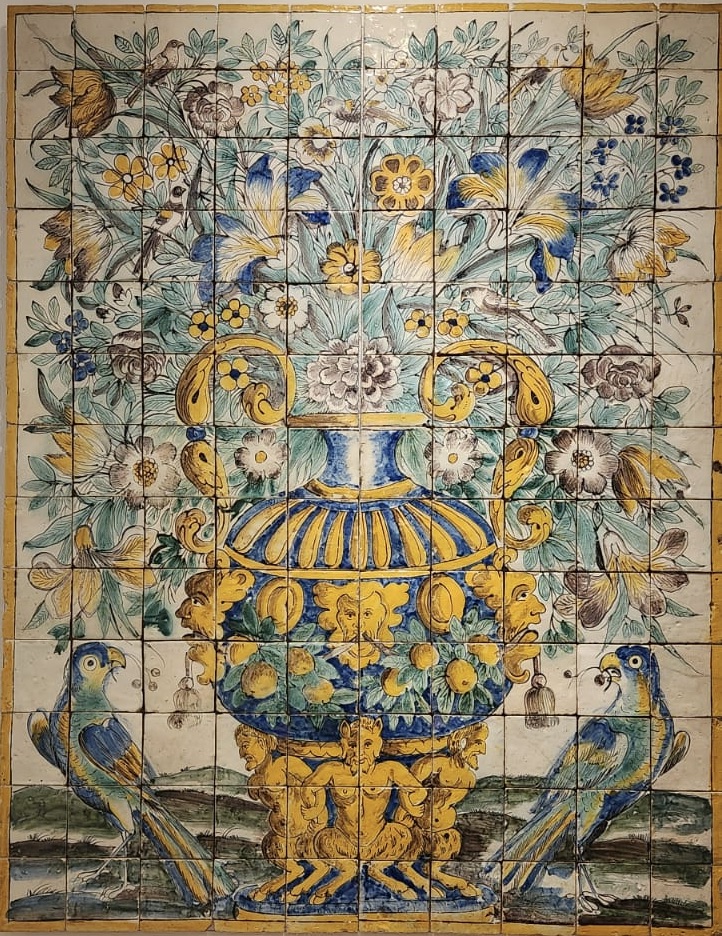
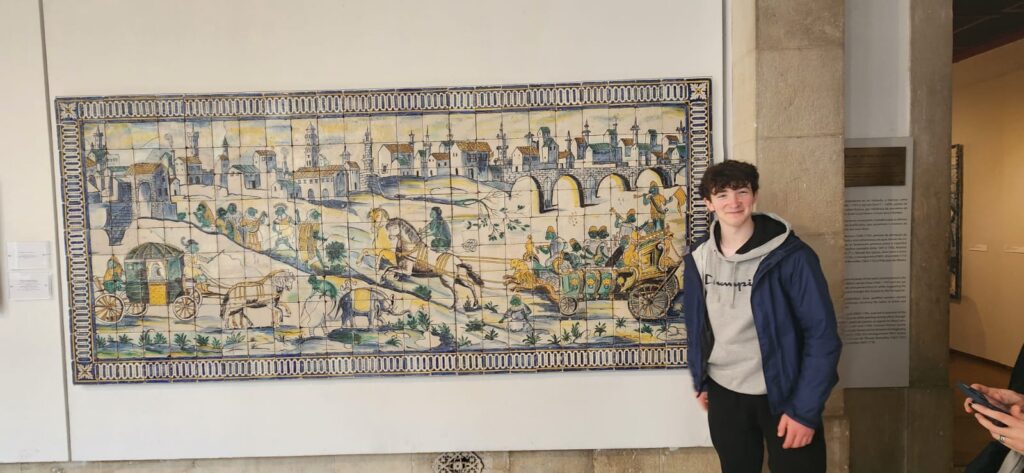

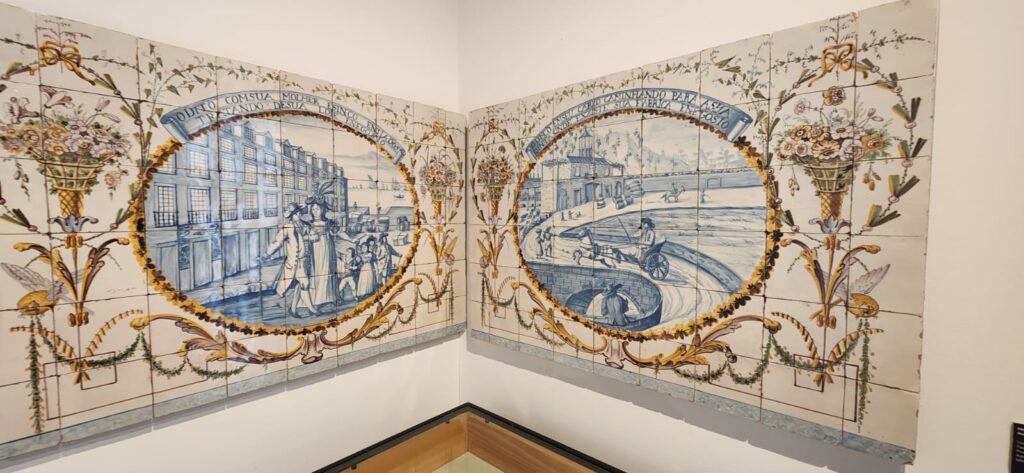
After the museum we had time to go for lunch. We just walked into a restaurant called Gelo Cafe off one of the main squares. Aubrey and I tried two types of cod: one was prepared a traditional Portuguese way with string potatoes, scrambled eggs and crispy onions all mixed up together, and the other was cooked like a fish steak with garlic, tomato, herbs and garlic and leeks.
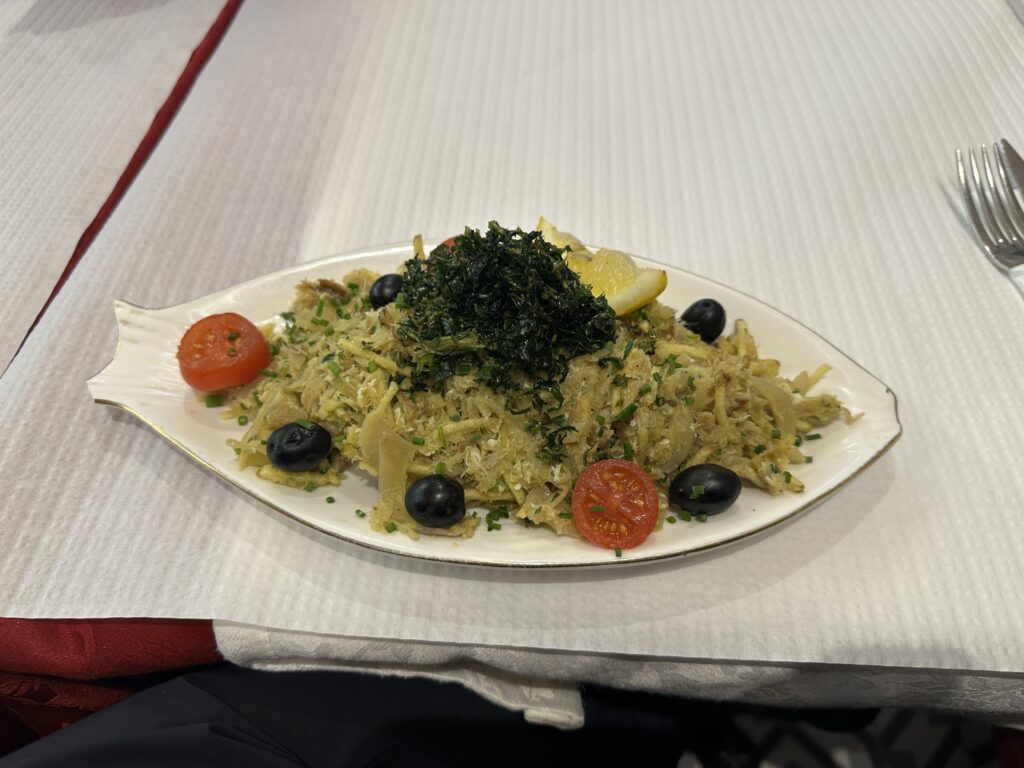
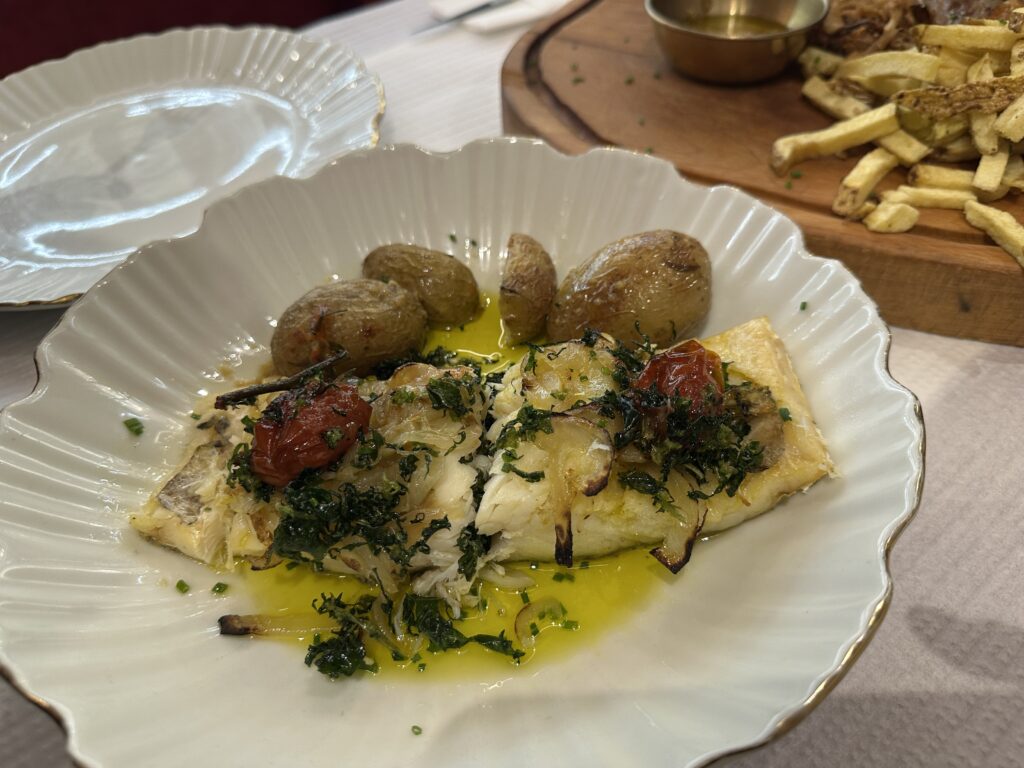
Teva of course had a steak. He eats constantly and wants beef at least once a day if he can. The restaurant has a long history connected to rebellion in Portugal. Although it was initially connected to the collection of ice from the mountains (hence the name “gelo” meaning “ice”) up north to cool the royal palace, the two men who assassinated King Carlos II and the royal prince started their journey from the restaurant. Carlos’ younger son assumed the throne for two years, until the fall of the monarchy in Portugal. His mother lived the rest of her life in exile.
Our friend Shari just returned from Portugal a couple of weeks ago and highly recommended a tuktuk driver, Silvia. They took a tour of the Belem area, so we booked her for this afternoon, as our previous plan was to do the tour on our own.
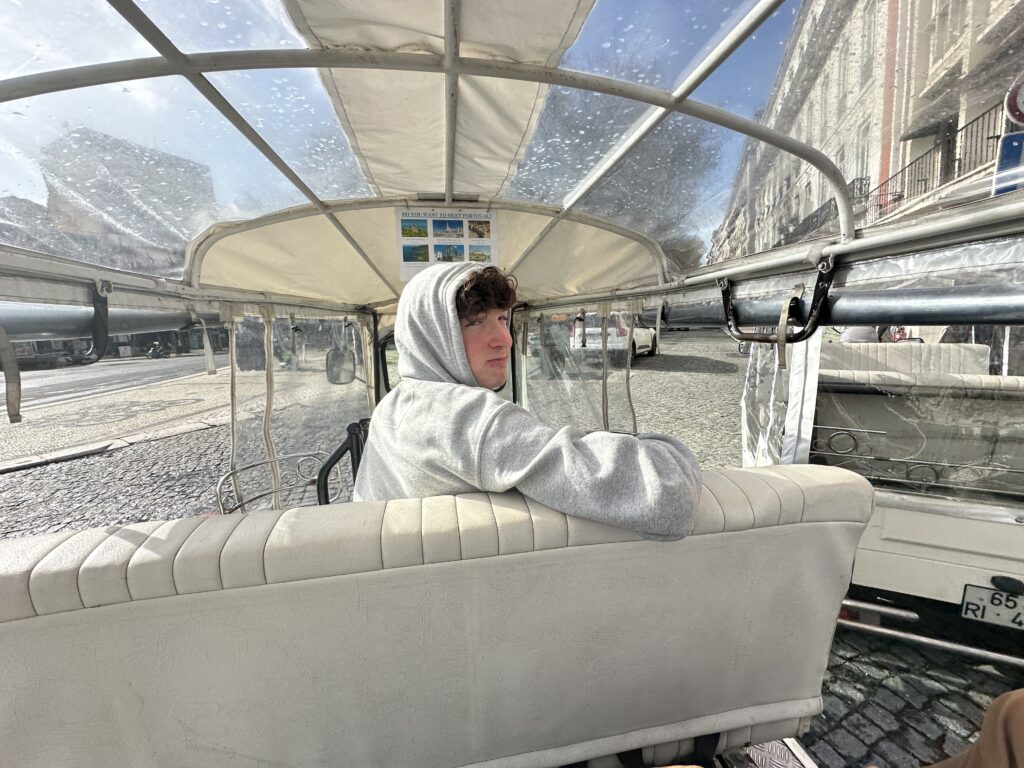
We passed by the famous Pink Street again, this time during the day:
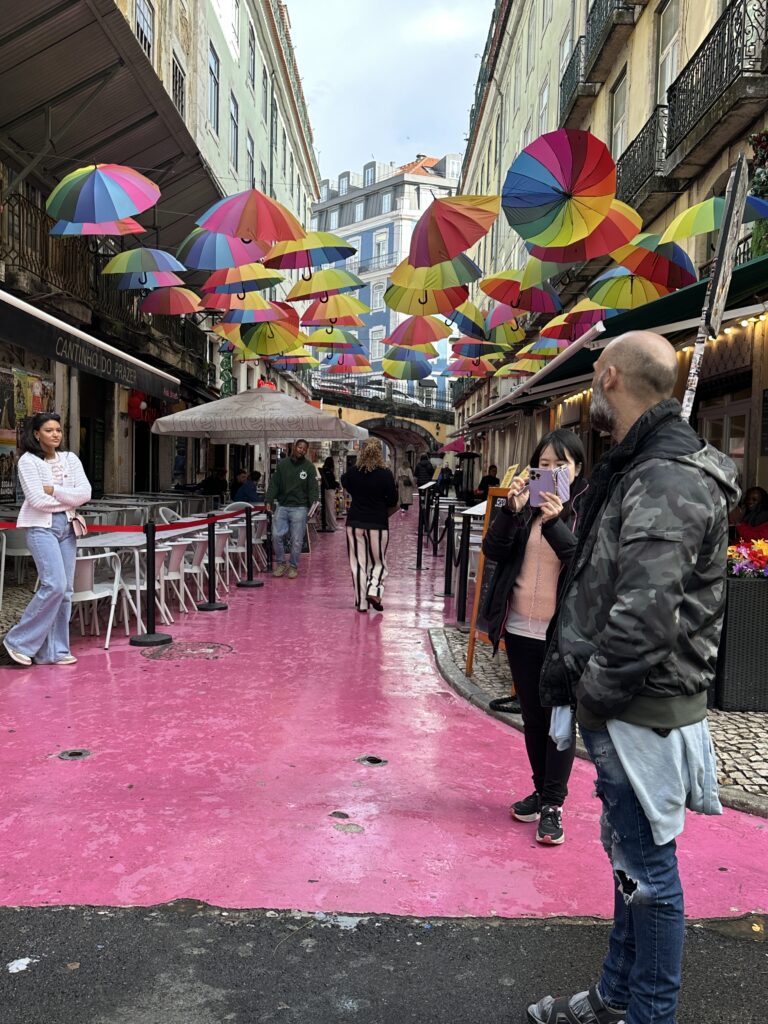
Unfortunately, both major attractions in Belem were not open, due to weather and/or maintenance, but we could still admire them from the outside. We learned a lot of interesting things about the city and street art on the way there, and then our first stop was at the original pastry shop for the Pasteis de Nata. The original recipe was from the monks who lived at the Jeronimos monastery. Traditionally, the monks would use an egg white mixture starch their robes and habits while ironing them, and so they always had a plethora of egg yolks in the monastery. They developed a custard recipe with those egg yolks. The monastery was also selling them before getting shut down in 1834, as a result of the religious orders being expelled during the Liberal Revolution.
To continue their production, the former clerics from the monastery sold the recipe to a confeitaria close by, which quickly became the most famous bakery of Lisbon and a UNESCO World Heritage Site.
Today, the iconic Pastéis de Belém (not “pastéis de nata” as they are called in the rest of the country) can be prepared only by six master bakers who know the original secret recipe from the Belém’s monks. We were told that there are three different chefs making the dough and the filling, and each only knows their own part. So, no one but the family has the original recipe. Since then, the Pasteis de Nata have become a traditional Portuguese food enjoyed throughout the country, not just in Belem.
I had tried them at home before, but the tarts here are really next level. We were able to tour the bakery, hear about the history, and then, of course, buy them from their vintage counter. Our guide told us that every day they make at least 20,000 tarts at that location, and on the high season the number explodes to 50,000!

As you may imagine, several other bakeries sell tarts in the area, but these are the OG tarts. Personally, I haven’t found a tart this week that I didn’t like, but I think I would agree that the OG are slightly better, but maybe it is psychological.
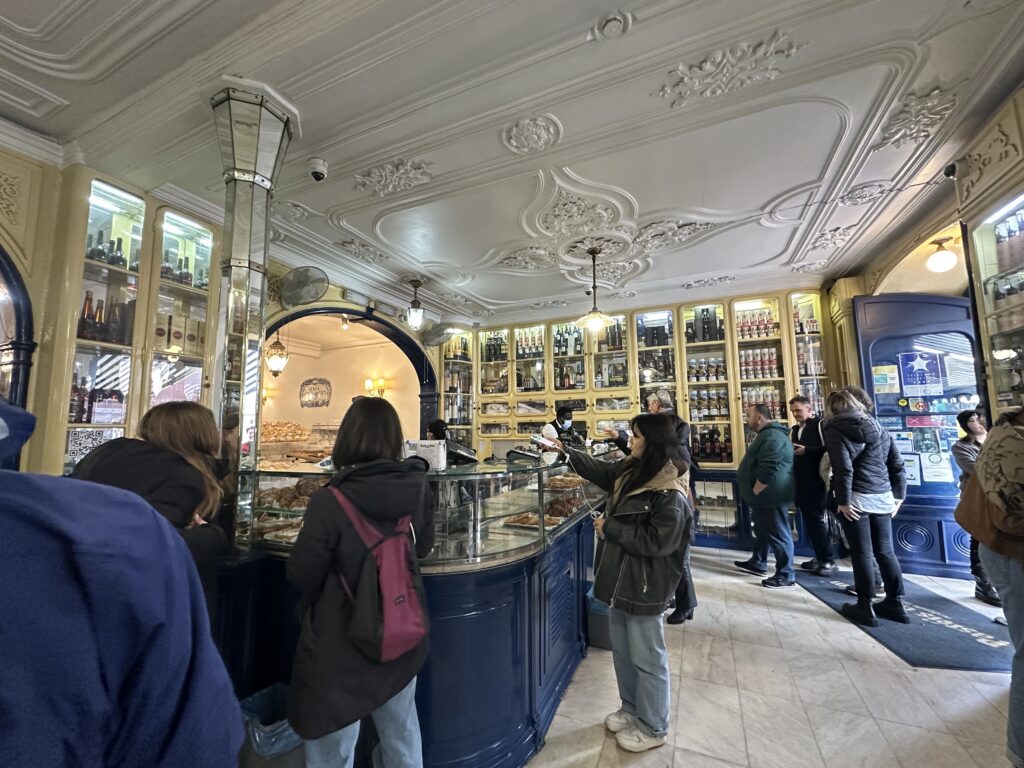
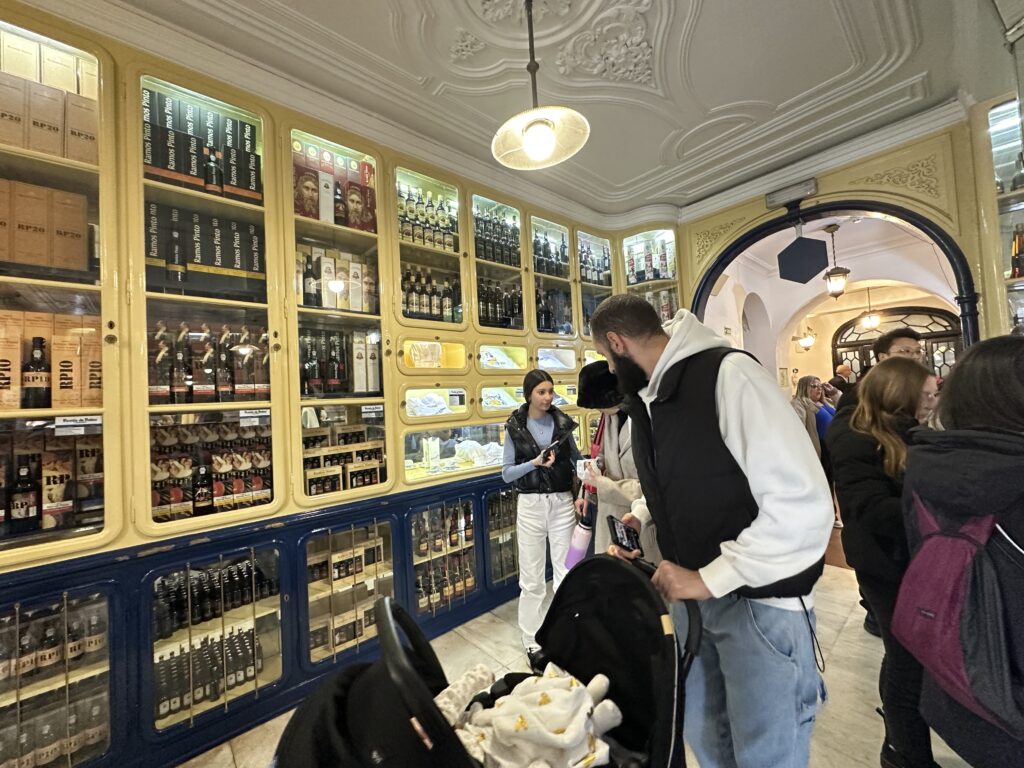
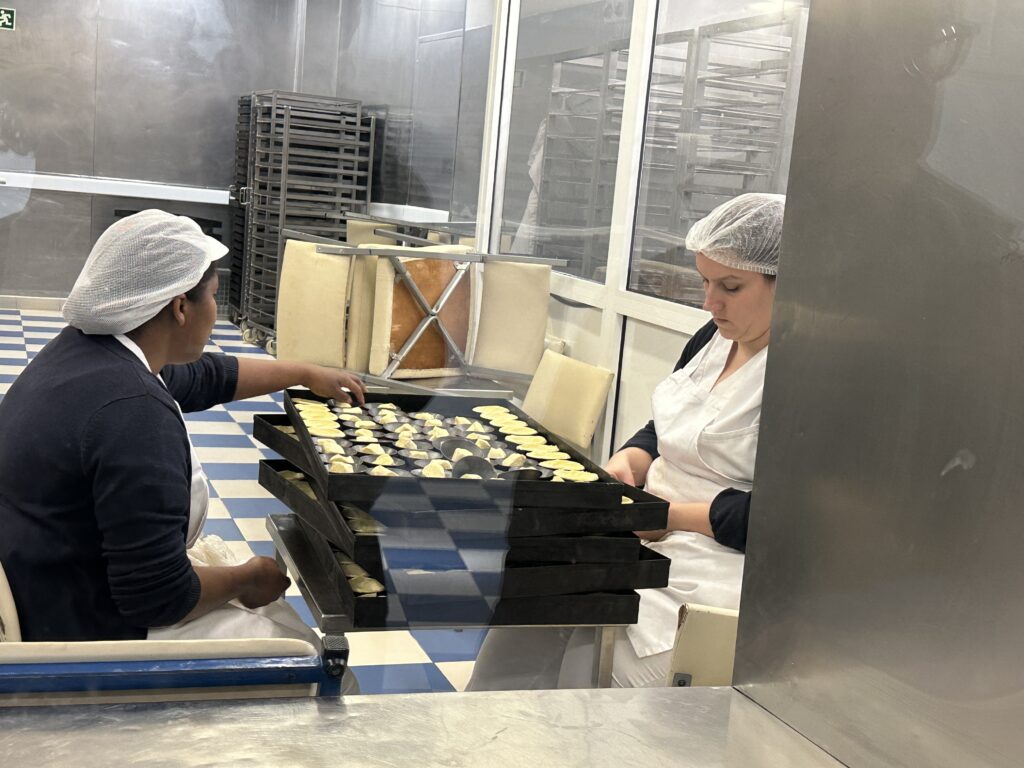
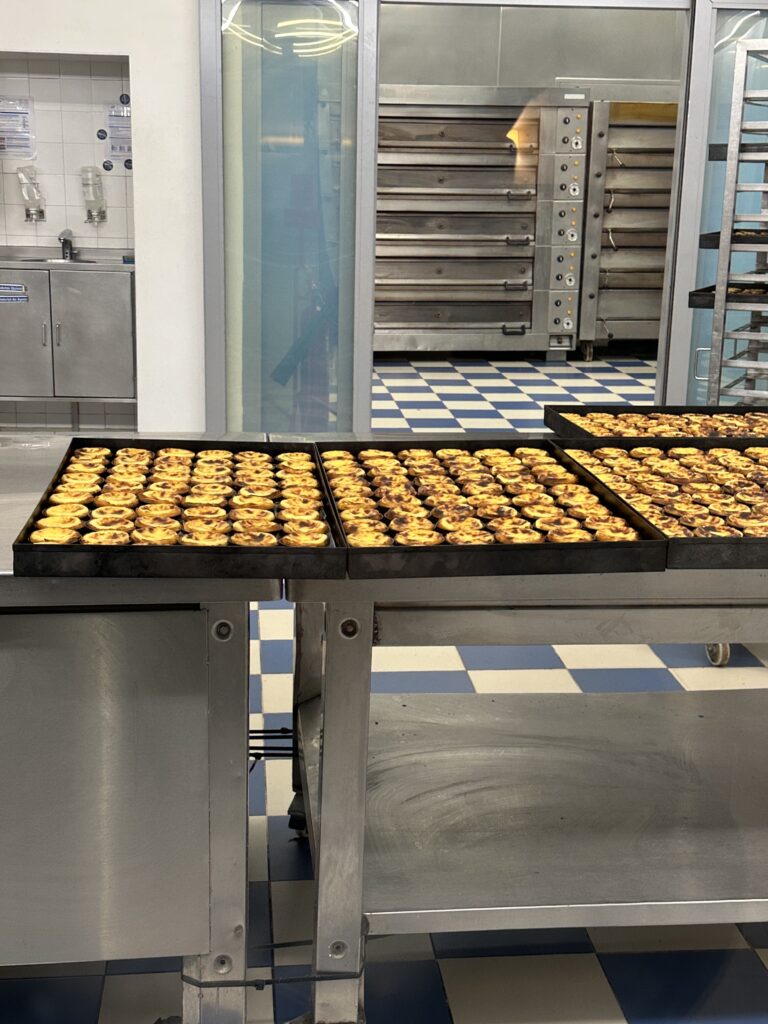
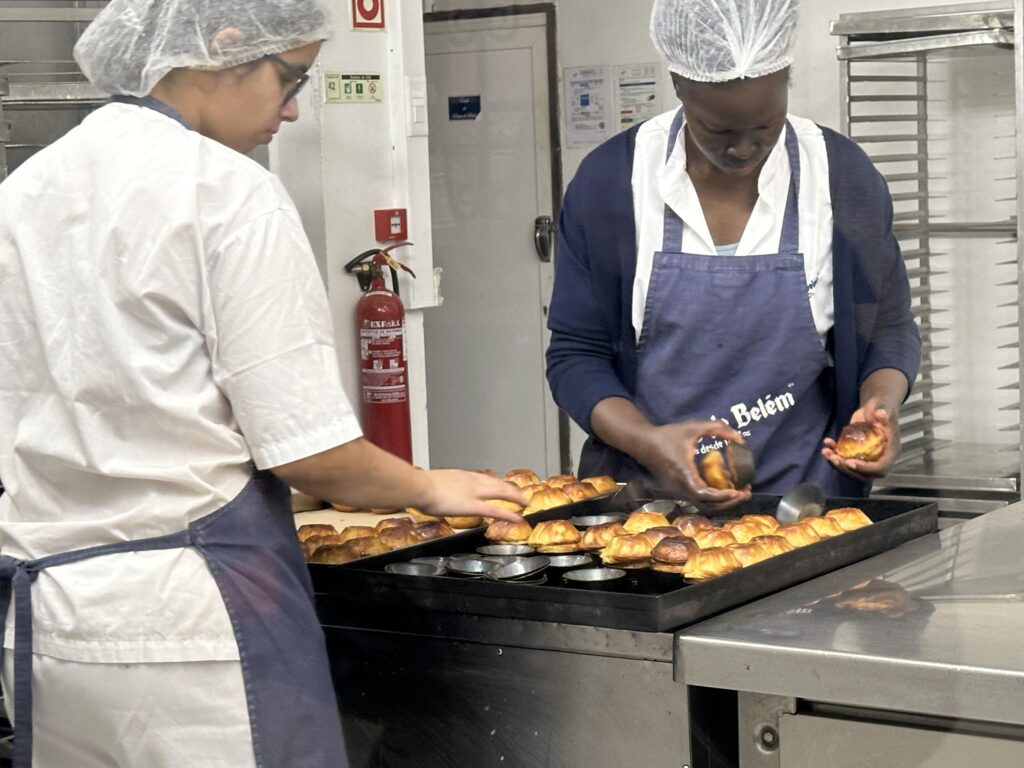
From there, we continued on to the Jeronimos Monastery and Church. The church was designed by King Manuel in his mixed architectural Manueline style. It took almost exactly 100 years to build, and it was his grandson who finished the project. It is closed for renovation and cleaning right now, but I think it is worth it. Comparing the church outside, now cleaned for the first time in 500 years, with the uncleaned monastery walls, the difference is substantial. I guess we will have to come back to eat more tarts and see the inside another time 🙂 To clean the outside, it took four years for six people to do the painstaking work, one section at a time, as to not have to close the monastery to tourists. Now they have a crew of 40 working on the inside, and are trying to complete it in 4 months. They do not want the attraction to be closed during high season this summer.
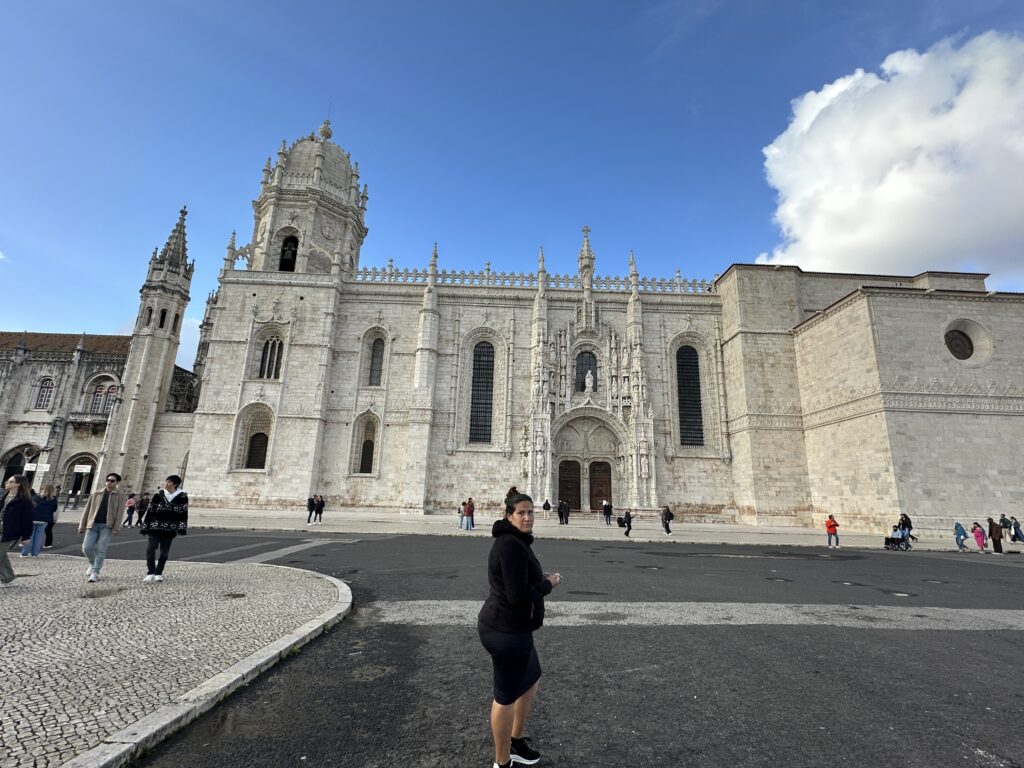
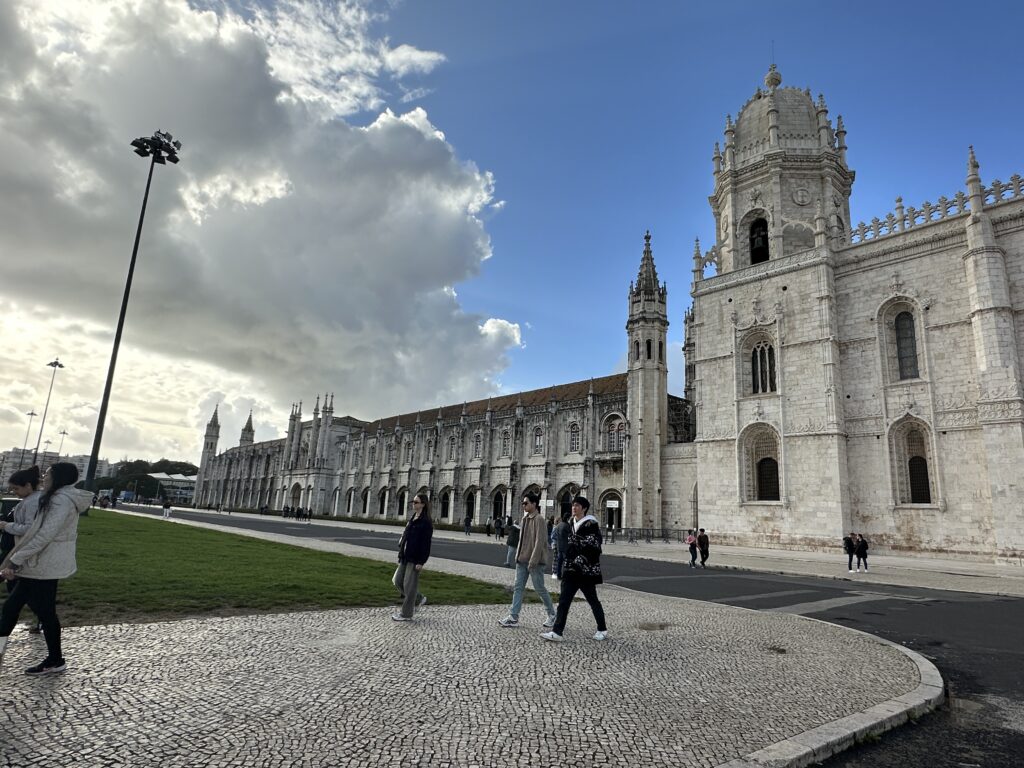
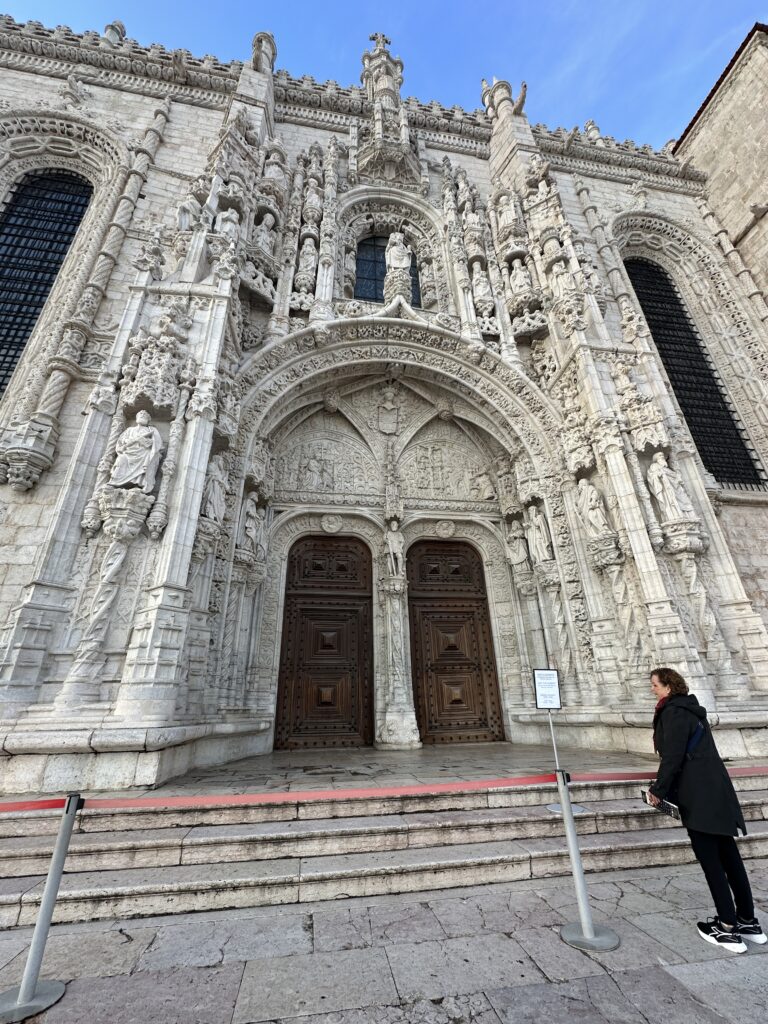
We drive by some more of the “trash wall art” of Bordalo II:
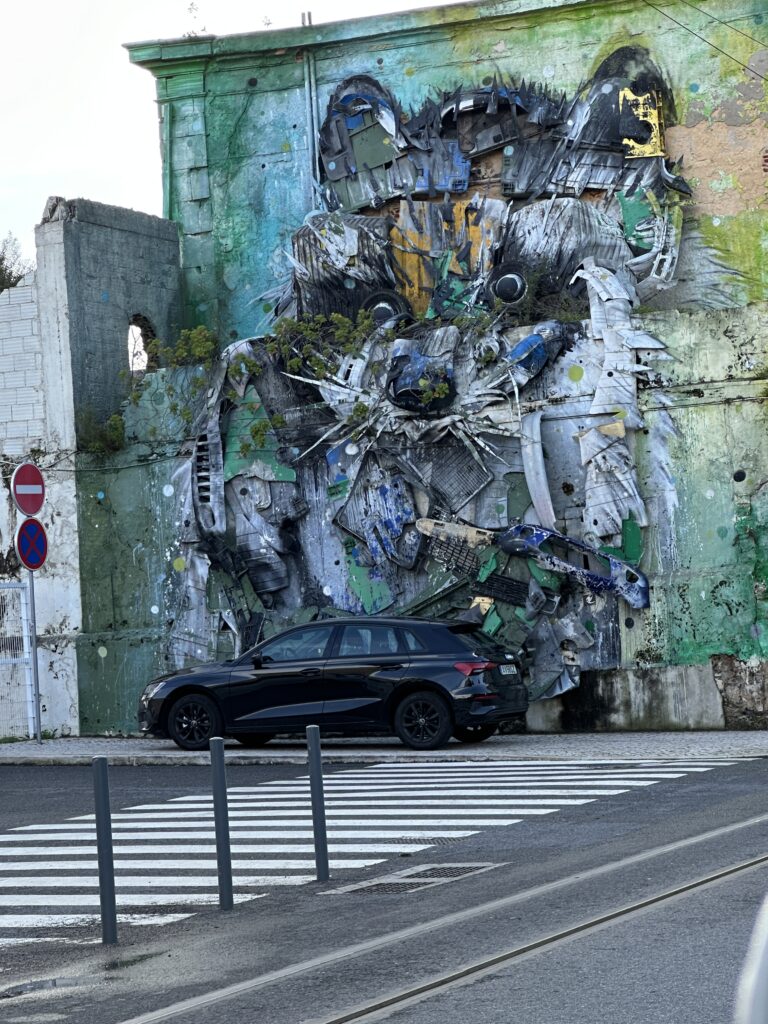
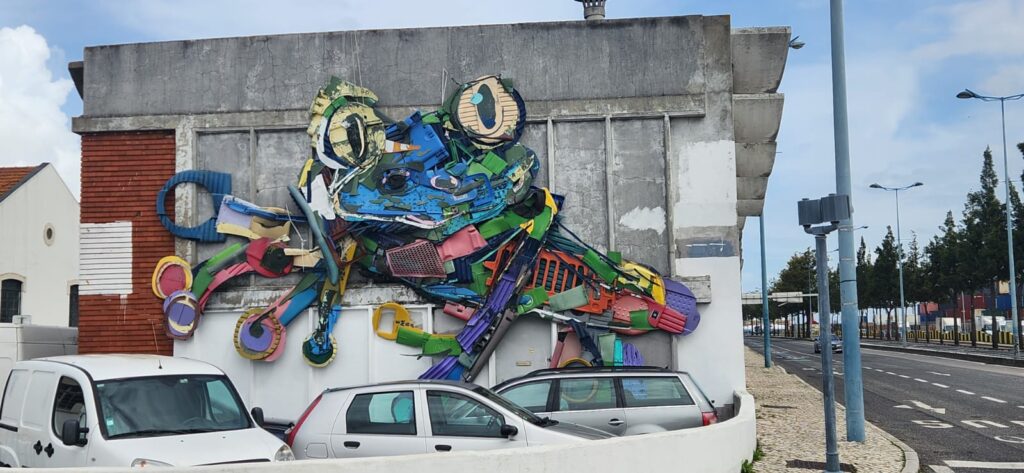
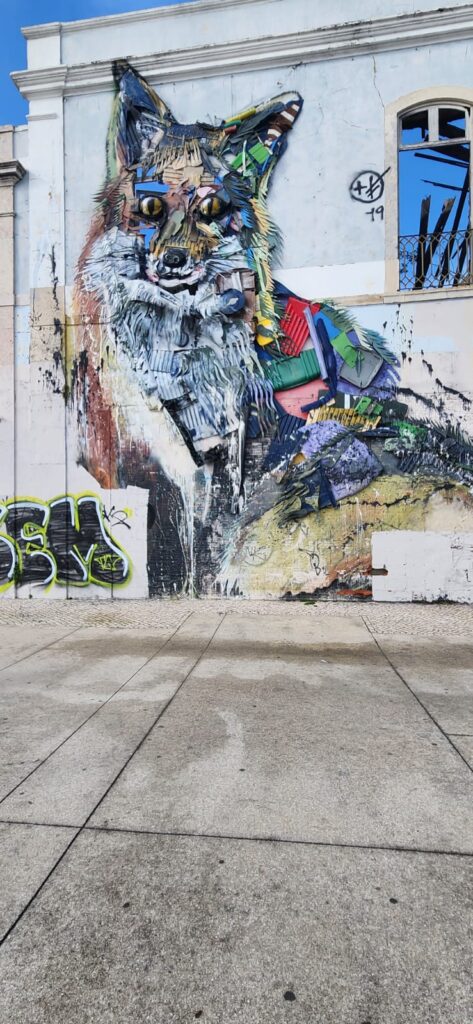
Our last stop was the Belem Tower. The three most popular attractions in Portugal are: the Pena Palace, the Belem Cathedral, and the Belem Tower. The idea of a fortress at the mouth of the Tagus River was initially conceived by King John II, but he died before the plans were made. Twenty years later, King Manuel I revisited this plan and commissioned military architect Fransisco de Arid to build a fortress in the shape of a boat in the river, on a tiny island right at the mouth of the river from the ocean stocked with cannons. It was very effective in deterring pirates, who were a big problem at the time, looking for Portugal’s gold and people to take for slaves. If the pirates dared come too close, they would be sunk with a barrage of cannon balls, or by soldier attack, before they entered the river and came close to the walled city. Lisbon was very well protected from the ocean and a huge part was due to this fort. Over the last two hundred years, after the fort was decommissioned, landfill was used to bring parkland right up to the fort walls. When the tower was active, access was only by boat, even for the soldiers who worked there.
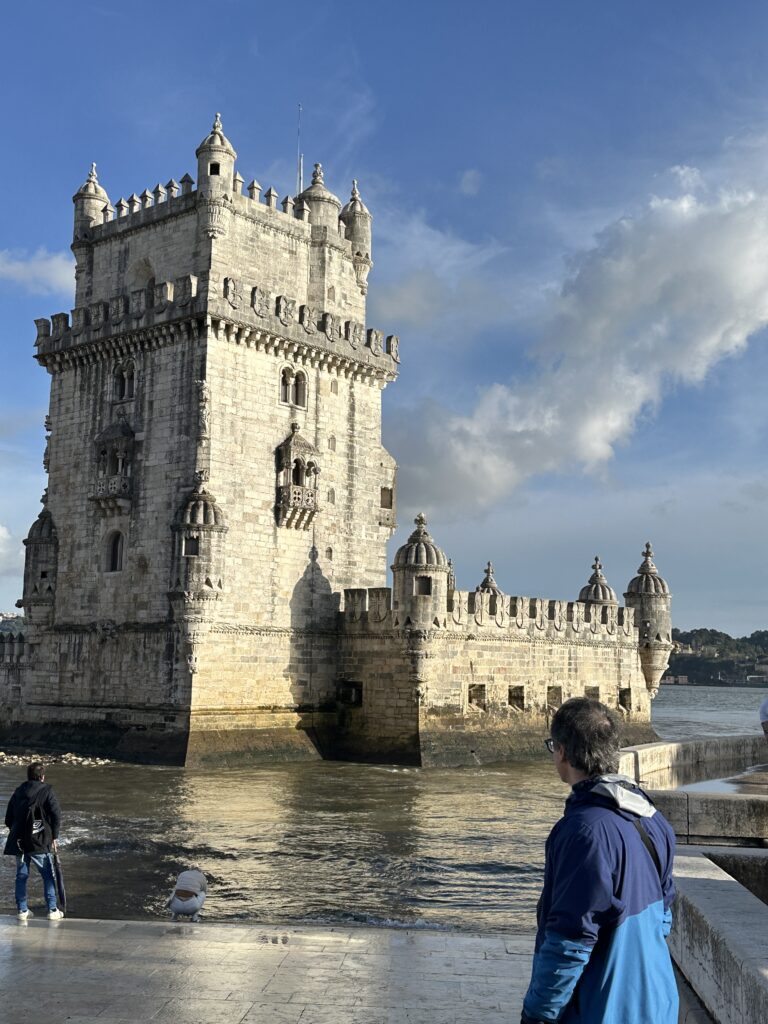
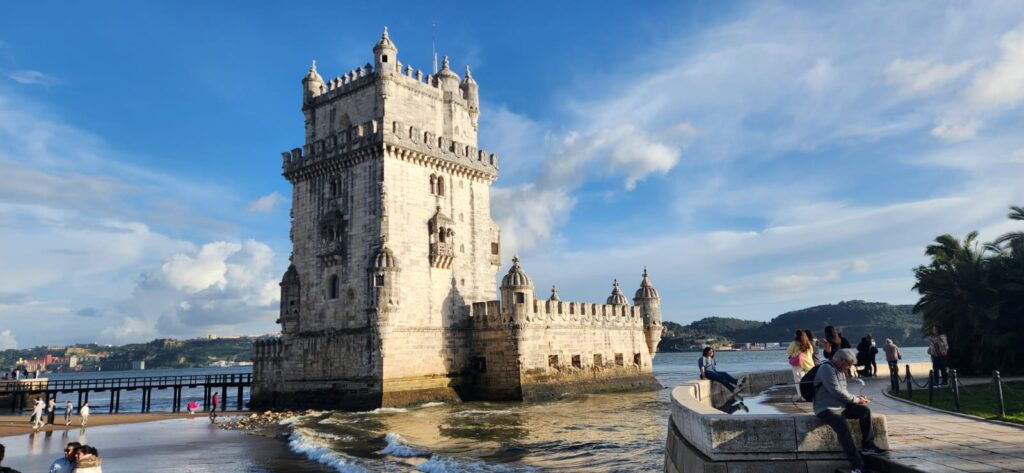
In front of the Belem Tower, there is a gigantic map gifted to Portugal from South Africa with a compass and map of the world inlaid in the floor. This giant map lies in front of a monument commissioned by the dictator Salazar to honour the Portuguese Explorers who went on expeditions to “discover” the new world. Silvia showed us, on the map, the sailing routes the explorers took and the locations of the Portuguese colonies.
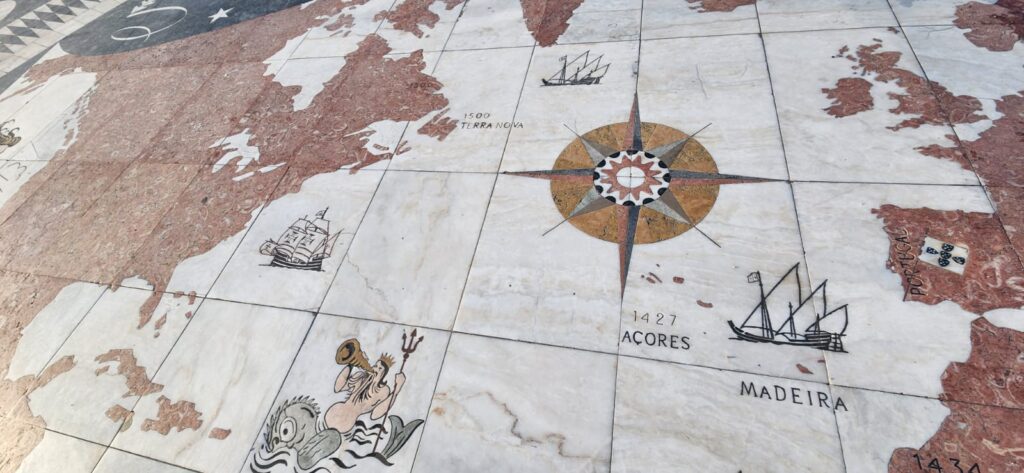
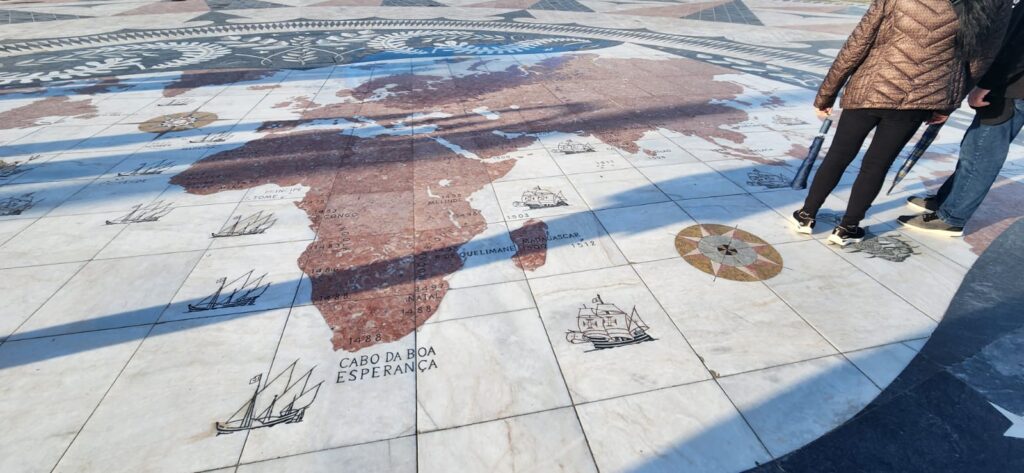
By the time Salazar was finally overthrown, the new government gave all of the colonies their independence from Portugal. Salazar was a dictator, and nowadays there is a saying that explains that Salazar did three really good things: 1) He commissioned the new “Golden Gate Bridge” 2) He commissioned this beautiful monument to the great marine explorers and those that supported them and 3) He died.
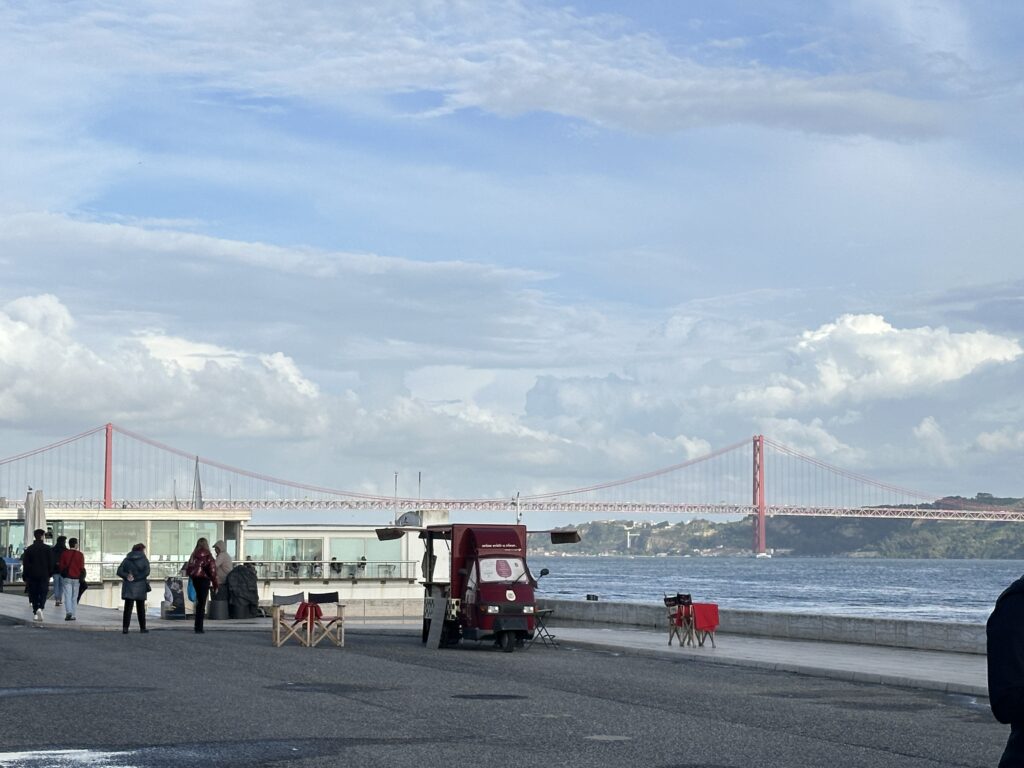
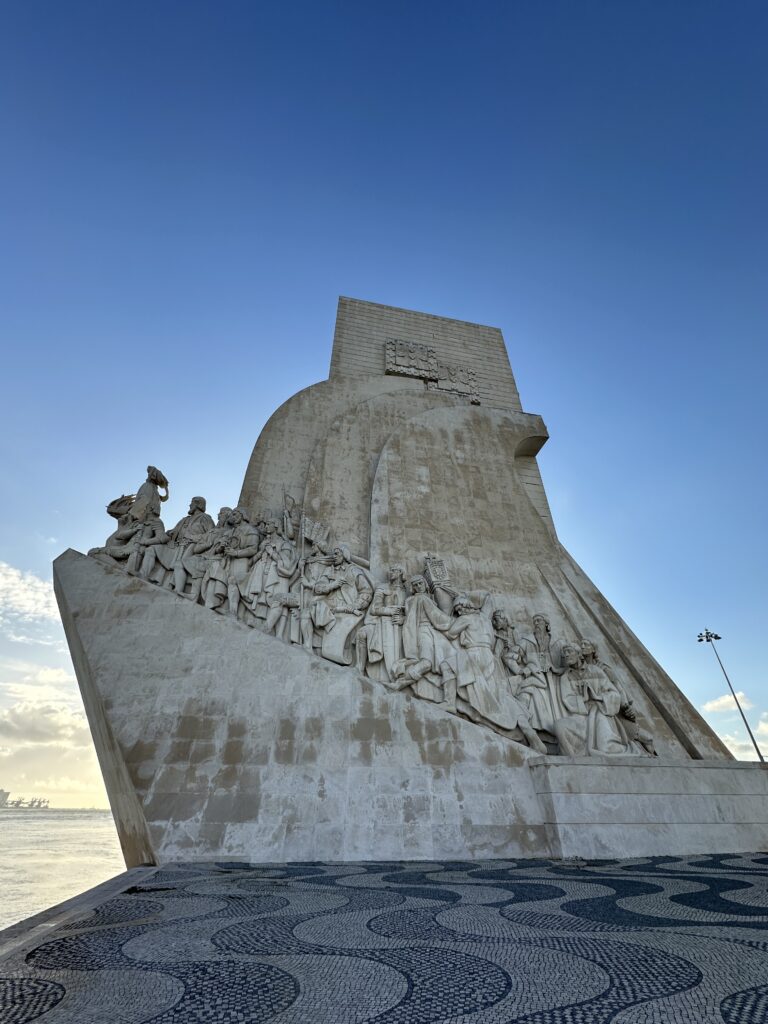

After our wonderful tour, Silvia dropped us off at what I thought was the address of the synagogue, but I think it was the office of the Jewish Community. We ended up having to frantically figure out how to get to the address of the actual synagogue. Luckily, it was a short subway ride away.
I will continue this in another post specifically about the synagogue experience.
